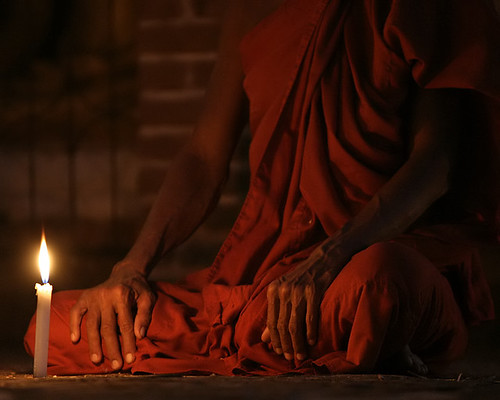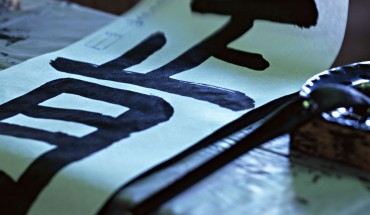 Or: How to recognize an enlightened being.
Or: How to recognize an enlightened being.
Again, this sounds like a Zen story. But it is not. It is from the early days of Buddhist practice when Sri Lanka (in this case) was full of “Living Buddhist Masters”. Enjoy this beautiful and funny story:
Once upon a time king Saddhatissa asked the Sangha: “Venerable Sirs, please name me one Venerable monk who is especially worthy of reference.” Then the monks told him about Thera Kuttatissa the elder monk from Mangana.
Now the king organized a huge procession and traveled the 500 mile long journey to meet and see the Ven. Kuttatissa. As the procession came closer to Mangana the venerable Thera Kuttatissa asked his fellow monks: „What is that noise all about?“ – „The Sangha in the capital, Venerable Sir, told the king, who asked for a monk most worthy of veneration, that you are the one he is looking for.“
Then the monk elder thought: „What is the use for me old monk in the king’s palace?“. So he set up his wooden bed outside under a tree and with his fingers draw letters into the sand.
The king, who in the meantime had arrived in Mangana, asked for Thera Kuttatissa. The other monks pointed towards the resting place of Venerable Kutatissa. When the king went to his resting place under the tree he saw the drawings in the sand and thought: „A holy Arahant, definitely, would have his fingers better under control; so therefore this monk cannot be a holy one“ he turned around and went back to his palace.
Now the other monks asked the Venerable Kuttatissa: “What did you do, Venerable Sir, that the king who came with so much faith suddenly left so disappointed?” – „Brethren, it is not your duty to worry about the faith of the king. Instead, your duty is it to help old monks.“
For those who like to read the original:
Saddhātissamahārājāpi, ‘‘bhante, mayhaṃ vanditabbayuttakaṃ ekaṃ ayyaṃ ācikkhathā’’ti pucchi. Bhikkhū ‘‘maṅgalavāsī kuṭṭatissatthero’’ti āhaṃsu. Rājā mahāparivārena pañcayojanamaggaṃ agamāsi. Thero ‘‘kiṃ saddo eso, āvuso’’ti bhikkhusaṅghaṃ pucchi. ‘‘Rājā, bhante, tumhākaṃ dassanatthāya āgato’’ti. Thero cintesi – ‘‘kiṃ mayhaṃ mahallakakāle rājagehe kamma’’nti divāṭṭhāne mañce nipajjitvā bhūmiyaṃ lekhaṃ likhanto acchi. Rājā ‘‘kahaṃ thero’’ti pucchitvā ‘‘divāṭṭhāne’’ti sutvā tattha gacchanto theraṃ bhūmiyaṃ lekhaṃ likhantaṃ disvā ‘‘khīṇāsavassa nāma hatthakukkuccaṃ natthi, nāyaṃ khīṇāsavo’’ti avanditvāva nivatti. Bhikkhusaṅgho theraṃ āha – ‘‘bhante, evaṃvidhassa saddhassa pasannassa rañño kasmā vippaṭisāraṃ karitthā’’ti. ‘‘Āvuso, rañño pasādarakkhanaṃ na tumhākaṃ bhāro, mahallakattherassa bhāro’’ti
Anguttaranikaya Atthakatha, PTS 2.246



